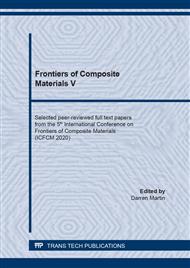p.29
p.37
p.47
p.57
p.69
p.75
p.81
p.89
p.95
Fluorine-Free Durable Superhydrophobic Surfaces Fabricated via a Simple Spraying Method
Abstract:
Superhydrophobic self-cleaning surfaces are based on the surface micro/nanomorphologies and special chemical regents with low surface free energy. Such surface structures are highly susceptible to mechanical wear. Moreover, the use of fluorinated compounds is harmful to both human health and environment. Herein, a simple method based on spin coating and spraying is proposed to fabricate durable fluorine-free superhydrophobic surfaces. A glass substrate was coated with a layer of water-based paint via a simple spinning process. Due to the adhesive layer, modified SiO2 nanoparticles were strongly bonded to the glass substrate. After the coating was completely cured, the surfaces realized a water contact angle of 165.1° and maintained their water repellency after 50 abrasion cycles with sandpaper and 50 times of stripping test. No chemical reagents harmful for the environment were used.
Info:
Periodical:
Pages:
69-73
Citation:
Online since:
August 2021
Authors:
Keywords:
Price:
Сopyright:
© 2021 Trans Tech Publications Ltd. All Rights Reserved
Share:
Citation:


